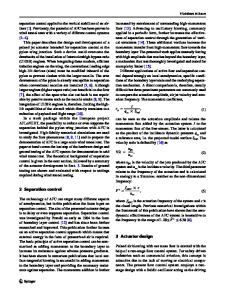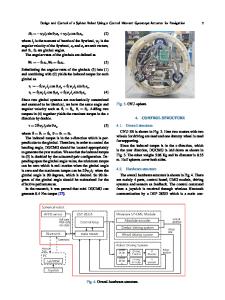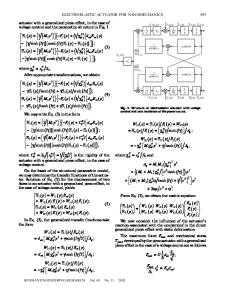Actuator and sensor placement for closed-loop control of convective instabilities
- PDF / 1,736,184 Bytes
- 23 Pages / 595.276 x 790.866 pts Page_size
- 46 Downloads / 267 Views
O R I G I NA L A RT I C L E
Guilherme A. Freire · André V. G. Cavalieri · Flávio J. Silvestre · A. Hanifi · D. S. Henningson
Actuator and sensor placement for closed-loop control of convective instabilities
Received: 14 January 2019 / Accepted: 7 June 2020 © Springer-Verlag GmbH Germany, part of Springer Nature 2020
Abstract This work deals with the characterization of the closed-loop control performance aiming at the delay of transition. We focus on convective wavepackets, typical of the initial stages of transition to turbulence, starting with the linearized Kuramoto–Sivashinsky equation as a model problem representative of the transitional 2D boundary layer; its simplified structure and reduced order provide a manageable framework for the study of fundamental concepts involving the control of linear wavepackets. The characterization is then extended to the 2D Blasius boundary layer. The objective of this study is to explore how the sensor–actuator placement affects the optimal control problem, formulated using linear quadratic Gaussian (LQG) regulators. This is carried out by evaluating errors of the optimal estimator at positions where control gains are significant, through a proposed metric, labelled as γ . Results show, in quantitative manner, why some choices of sensor–actuator placement are more effective than others for flow control: good (respectively, bad) closed-loop performance is obtained when estimation errors are low (respectively, high) in the regions with significant gains in the full-state-feedback problem. Unsatisfactory performance is further understood as dominant estimation error modes that overlap spatially with control gains, which shows directions for improvement of a given set-up by moving sensors or actuators. The proposed metric and analysis explain most trends in closed-loop performance as a function of sensor and actuator position, obtained for the model problem and for the 2D Blasius boundary layer. The spatial characterization of the γ -metric provides thus a valuable and intuitive tool for the problem of sensor–actuator placement, targeting here transition delay but possibly extending to other amplifier-type flows. Keywords Convective instabilities · Closed-loop control · Sensor–actuator placement Communicated by Daniel J. Bodony. G. A. Freire (B) · A. V. G. Cavalieri · F. J. Silvestre Division of Aeronautical Engineering, Instituto Tecnológico de Aeronáutica (ITA), São José dos Campos, Brazil E-mail: [email protected] A. V. G. Cavalieri E-mail: [email protected] F. J. Silvestre E-mail: [email protected] A. Hanifi · D. S. Henningson Linné FLOW Centre, KTH Royal Institute of Technology, 10044 Stockholm, Sweden E-mail: [email protected] D. S. Henningson E-mail: [email protected]
G. A. Freire et al.
1 Introduction Closed-loop flow control is a strategy that combines the open-loop dynamics of the governing equations, given by stability theory, and the input–output approach of control theory, aiming at the manipulation of the system behaviour [4]. One of its most prominent objectives is
Data Loading...











